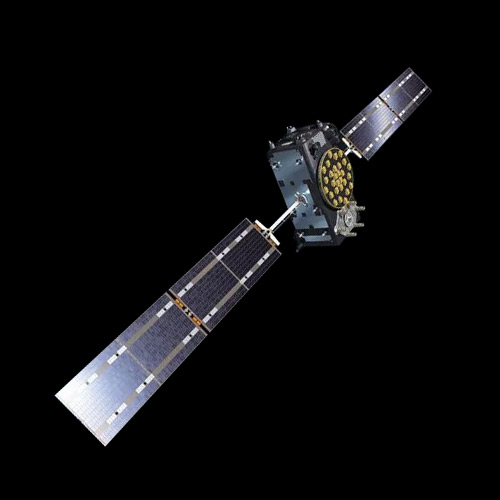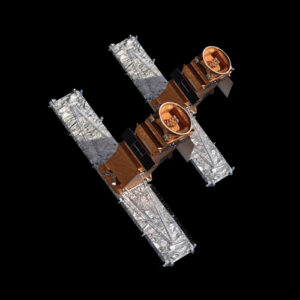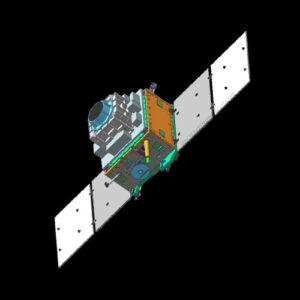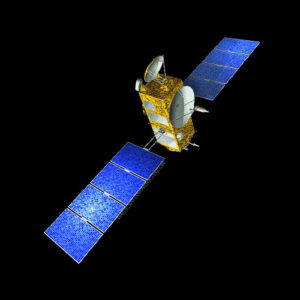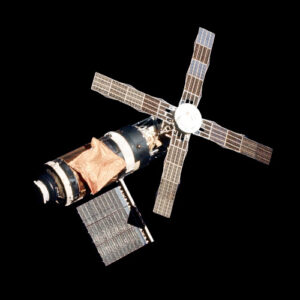The Galileo Navigation Satellites are part of the European Union’s Galileo program, a global navigation satellite system (GNSS) designed to provide high-precision positioning and timing services worldwide. Launched by the European Space Agency (ESA) and the European Union (EU), Galileo aims to offer an independent alternative to the American GPS and Russian GLONASS systems.
Notable achievements of the Galileo program include its full operational capability, which provides real-time positioning accuracy within a meter, and its applications in diverse fields such as transportation, telecommunications, and emergency response. Galileo has become a cornerstone of Europe’s space capabilities, enhancing both civilian and military navigation services.
Design and Construction
The design of the Galileo Navigation Satellites focuses on high precision, reliability, and resilience. Each satellite is equipped with a variety of atomic clocks, including rubidium and hydrogen maser clocks, to ensure the highest possible accuracy in timekeeping, which is crucial for precise positioning. The satellites are constructed from lightweight but durable materials such as aluminum and titanium alloys, designed to withstand the harsh conditions of space.
The body of each satellite includes a payload module and a bus module. The payload module houses the navigation payload, including the atomic clocks and signal generation units, while the bus module contains the satellite’s subsystems for power, thermal control, and propulsion. The solar panels, made from high-efficiency photovoltaic cells, are designed to provide continuous power to the satellite’s systems.
One of the unique engineering challenges faced during the development of the Galileo satellites was ensuring the synchronization of the atomic clocks onboard each satellite, as this is critical for maintaining the accuracy of the navigation signals. Additionally, the satellites had to be designed to operate reliably over their intended lifespan of about 12 years in the challenging environment of medium Earth orbit (MEO), at an altitude of approximately 23,222 kilometers.
To address these challenges, advanced thermal control systems were developed to manage the heat generated by the onboard electronics and atomic clocks. Robust radiation shielding was also incorporated to protect the sensitive components from the high levels of cosmic radiation encountered in MEO. The satellites were subjected to rigorous testing, including thermal vacuum tests, vibration tests, and electromagnetic compatibility tests, to ensure they could endure the conditions of launch and space operations.
Mission Objectives
The primary mission objective of the Galileo Navigation Satellites is to provide high-precision global positioning services. This involves delivering accurate real-time positioning, navigation, and timing information to users worldwide. The system is designed to be interoperable with other GNSS, such as GPS and GLONASS, enhancing global navigation capabilities.
Secondary objectives of the Galileo program include supporting various scientific and commercial applications. For instance, Galileo aids in geodetic and geophysical research by providing precise measurements that contribute to studies of Earth’s shape, gravitational field, and seismic activity. The system also enhances safety and efficiency in transportation sectors, including aviation, maritime, and rail, by offering reliable navigation and timing services.
Galileo also aims to contribute to public safety and emergency response. The satellites are equipped with a search and rescue transponder, part of the international Cospas-Sarsat system, which helps locate distress signals from emergency beacons worldwide. This capability significantly improves the speed and accuracy of search and rescue operations.
Moreover, Galileo supports Europe’s strategic autonomy by providing an independent and secure navigation system that reduces reliance on non-European GNSS. This independence is crucial for both civilian and military applications, ensuring continuous and reliable access to navigation services even in times of geopolitical tension.
Launch and Deployment
The Galileo Navigation Satellites are launched using Arianespace’s Ariane 5, Soyuz, and Ariane 6 rockets. The initial launch took place on December 28, 2005, with subsequent launches continuing to populate the constellation. Launches are conducted from the Guiana Space Centre in Kourou, French Guiana, a strategic location that allows for optimal insertion into medium Earth orbit.
The deployment of Galileo satellites faced several challenges, including a notable incident in 2014 when two satellites were injected into incorrect orbits due to a malfunction in the Soyuz rocket’s upper stage. However, engineers successfully adjusted the orbits, and the satellites were eventually incorporated into the constellation.
Key discoveries during the mission include advancements in atomic clock technology and improvements in satellite navigation accuracy. Significant milestones achieved by the Galileo program include reaching Initial Operational Capability (IOC) in 2016 and Full Operational Capability (FOC) in 2019. These milestones mark the system’s readiness to provide global navigation services and its integration into various commercial and scientific applications.
Technical Specifications
- Dimensions: Each satellite measures approximately 2.7 x 1.2 x 1.1 meters.
- Weight: Around 715 kilograms.
- Payload Capacity: Equipped with multiple atomic clocks and navigation payloads.
- Propulsion System: Hydrazine thrusters for orbital adjustments and station-keeping.
- Power Source: Two deployable solar panels generating about 1.9 kilowatts of power.
- Instruments and Equipment:
- Atomic Clocks: Rubidium and hydrogen maser clocks for precise timekeeping.
- Signal Generation Units: For broadcasting navigation signals.
- Search and Rescue Transponder: Part of the Cospas-Sarsat system.
- Thermal Control System: To manage heat dissipation.
- Radiation Shielding: Protects sensitive electronics from cosmic radiation.
Current Status
As of 2024, the Galileo constellation is fully operational with 24 active satellites and several spares in orbit. The system provides global positioning services with high accuracy, benefiting a wide range of applications from everyday smartphone navigation to critical infrastructure management. The Galileo program continues to evolve, with ongoing efforts to enhance the system’s capabilities and resilience.
Future plans for the Galileo program include the deployment of next-generation satellites, which will offer improved performance, increased resistance to jamming and interference, and enhanced service availability. These advancements will further solidify Galileo’s role as a cornerstone of global navigation systems.
Additionally, ESA and the European Union are working on expanding Galileo’s applications in emerging fields such as autonomous vehicles, smart cities, and the Internet of Things (IoT). Continuous upgrades and innovations ensure that Galileo remains at the forefront of satellite navigation technology, contributing to Europe’s strategic independence and technological leadership in space.
